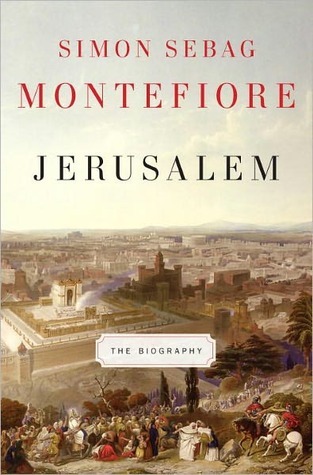More on this book
Community
Kindle Notes & Highlights
The Arab Revolt, Hitler’s Final Solution and the White Paper convinced many Zionists that violence was the only way to force Britain to grant the promised Jewish homeland.
Thirty-three countries voted in favour of Resolution 181, led by the United States and the Soviet Union, thirteen voted against, and ten, including Britain, abstained.
The Arabs did not accept that the UN had authority to carve up the country. There were 1.2 million Palestinians who still owned 94 per cent of the land; there were 600,000 Jews. Both sides prepared to fight, while Jewish and Arab extremists competed in a flint-hearted tournament of mutual savagery. Jerusalem was ‘at war with itself’.
Nineteen-fifty-six was the twilight of British Middle Eastern imperium and the dawn of American ascendancy.
East. A decision that had been taken in panic, a conquest that was never planned, a military victory stolen from the edge of catastrophe, changed those who believed, those who believed nothing and those who craved to believe in something.
It was not only Jews who were affected: the much more numerous and powerful Christian evangelicals, especially those of America, also experienced this instant of almost apocalyptic ecstasy. Evangelicals believed that two of the preconditions had been met for Judgement Day: Israel was restored and Jerusalem was Jewish. All that remained was the rebuilding of the Third Temple and seven years of tribulation, followed by the battle of Armageddon when St Michael would appear on the Mount of Olives to fight the Anti-Christ on the Temple Mount. This would culminate in the conversion or destruction of
...more
The victory of the small Jewish democracy against the Soviet-armed legions of Arab despotism convinced the United States that Israel was its special friend in the most dangerous of neighbourhoods, its ally in the struggle against Communist Russia, Nasserite radicalism and Islamicist fundamentalism. America and Israel shared more than that, for they were countries built on an ideal of freedom touched by the divine: one was the new Zion, the ‘city on a hill’, the other the old Zion restored.
The energy of the Intifada created a power vacuum that was filled by new leaders and ideas: the PLO elite was out of touch with the Palestinian street, and fundamentalist Islam was replacing Nasser’s obsolete pan-Arabism. In 1987, Islamicist radicals founded the Islamic Resistance Movement, Hamas, a branch of the Egyptian Muslim Brotherhood, which was dedicated to the jihad to destroy Israel. The Intifada also altered Jewish Jerusalem, admitted Kollek, ‘in a fundamental way’ – it destroyed the dream of a united city. Israelis and Arabs ceased to work together; they no longer walked through
...more
Israel faces two paths – the Jerusalemite, religious-nationalist state versus a liberal, westernized Tel Aviv which is nicknamed ‘the Bubble’.
The peace-party in Israeli democracy is in eclipse, its fragile governments influenced by overmighty religious-nationalist parties while the fractious Palestinian factions, encouraged by the Arab Spring, try to reconcile their very different programmes – that of Fatah, conciliatory and secular, that of Hamas, militant and Islamicist – to form a united Palestinian government.
The real conditions for peace are not just the details of which Herodian cistern will be Palestinian or Israeli but the heartfelt intangibles of mutual trust and respect. On both sides, some elements deny the history of the Other. If this book has any mission, I passionately hope that it might encourage each side to recognize and respect the ancient heritage of the Other:
For 1,000 years, Jerusalem was exclusively Jewish; for about 400 years, Christian; for 1,300 years, Islamic; and not one of the three faiths ever gained Jerusalem without the sword, the mangonel or the howitzer.


